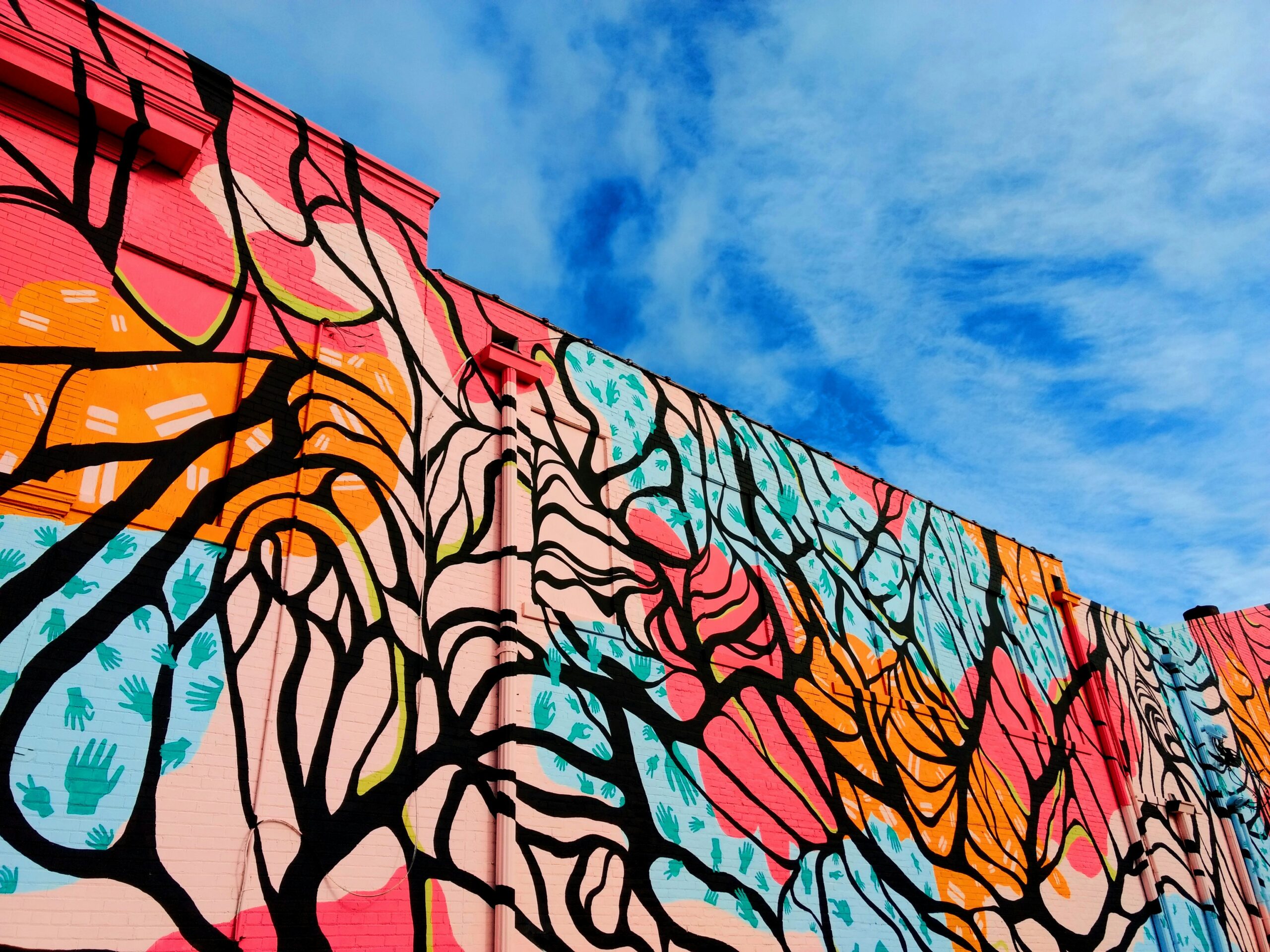Introduction
Art is often associated with galleries, museums, and private collections. But some of the most powerful and transformative artistic experiences happen not behind walls—but out in the open. Public art brings creativity into our everyday environments: on sidewalks, in parks, on the sides of buildings, and in urban squares. It’s democratic, visible, and often free from the conventions of the traditional art world.
In this article, we’ll explore what public art is, why it matters, its many forms, and how it contributes to our understanding of community, culture, and belonging. Whether you are a curious observer, an artist, or an urban planner, understanding public art can help you see your environment—and your role within it—in new ways.
What Is Public Art?
Public art is art that is designed and displayed in public spaces. It is accessible to everyone, often outdoors, and usually created with the intention of enhancing public life, prompting thought, or celebrating local culture.
Unlike art in museums, public art is not isolated from everyday life—it is embedded within it. It is often site-specific, meaning it is created in response to the particular place it inhabits.
Public art can take many forms:
Sculptures
Murals and street art
Monuments and memorials
Light installations
Sound-based works
Interactive or participatory projects
Some works are permanent, while others are temporary or event-based.
A Brief History of Public Art
Public art has deep historical roots:
Ancient civilizations, such as those in Mesopotamia, Greece, and Egypt, built statues and temples to display political power or religious devotion.
Renaissance cities commissioned sculptures and fountains as symbols of wealth and patronage.
Monuments and memorials in the 19th and 20th centuries served to commemorate wars, leaders, and national events.
However, modern public art has evolved beyond commemoration. Since the 1960s, artists have explored community engagement, protest, humor, and experimentation through public art, often challenging conventional definitions of both art and public space.
Purposes of Public Art
Public art serves many overlapping functions:
1. Cultural Expression
Public art reflects the values, struggles, and stories of a community. It can preserve heritage or highlight contemporary issues.
Example: The murals of Diego Rivera in Mexico City blend indigenous history with Marxist ideology.
2. Place-Making
Art can enhance the aesthetic and identity of public spaces, making them more welcoming, memorable, and engaging.
Example: The “Cloud Gate” (also known as “The Bean”) by Anish Kapoor in Chicago has become a symbol of the city.
3. Social Commentary
Artists use public space to comment on politics, inequality, climate change, or other pressing topics—directly confronting audiences who might not visit museums.
Example: Banksy’s street art is internationally known for its biting satire and accessibility.
4. Community Engagement
Public art can be participatory, inviting locals to contribute to its creation or interact with the final piece.
Example: The Before I Die Wall by Candy Chang invites passersby to write their hopes and dreams on a chalkboard surface.
5. Economic and Tourism Benefits
Iconic works of public art can revitalize neighborhoods and attract visitors, supporting local economies.
Forms and Styles of Public Art
1. Murals
Painted directly on walls or surfaces, murals can transform a dull urban landscape into a canvas for storytelling. They are often grassroots, community-driven, and expressive of local identities.
Example: The Mission District Murals in San Francisco depict Latinx culture, activism, and daily life.
2. Sculptures
Sculptures in parks, plazas, or urban centers often become landmarks or meeting points. Their permanence lends a sense of solidity and presence.
Example: The LOVE sculpture by Robert Indiana has versions installed in cities around the world.
3. Monuments and Memorials
These works honor individuals, events, or ideas. While some are celebratory, others invite mourning or reflection.
Example: The Vietnam Veterans Memorial in Washington, D.C., designed by Maya Lin, offers a powerful minimalist tribute.
4. Interactive Installations
These artworks invite participation, play, or physical engagement, blurring the line between audience and artist.
Example: “The Pool” by Jen Lewin uses circular pads that light up in response to movement.
5. Digital and Light Art
Artists use projection mapping, LEDs, or sound to create time-based experiences that activate public spaces.
Example: The Lumiere Light Festival in Durham, UK, transforms the city into a nighttime gallery.
Challenges and Controversies in Public Art
Despite its public appeal, public art is not without tension. Here are some common challenges:
1. Vandalism and Weathering
Being exposed to the elements and the public, artworks often suffer from deterioration or intentional damage. Preservation becomes a key concern.
2. Political Disputes
What is meaningful to some may be offensive to others. Monuments or murals can become sites of protest, particularly when political power shifts.
Example: Statues of Confederate leaders in the U.S. have been removed or defaced during protests against systemic racism.
3. Gentrification
While public art can beautify a neighborhood, it can also contribute to rising property values and displacement if not handled inclusively.
4. Artistic Freedom vs. Public Approval
Balancing the artist’s vision with public tastes, cultural sensitivities, and bureaucratic processes can be complex.
Public Art and Community Engagement
One of the most powerful aspects of public art is its potential to involve people directly. Community-based public art emphasizes collaboration, inclusion, and empowerment.
Strategies for Inclusive Public Art:
Involve locals from the planning stage.
Respect cultural and historical context.
Provide opportunities for youth and marginalized voices.
Choose materials and locations that are sustainable and accessible.
Example: The Philadelphia Mural Arts Program has produced over 4,000 murals through partnerships with schools, nonprofits, and neighborhood groups—turning the city into an open-air art museum.
Contemporary Artists in Public Art
Many renowned contemporary artists work in the public realm:
JR (France): Large-scale black-and-white photographic installations that humanize marginalized communities.
Kara Walker (USA): Monumental installations confronting slavery and racial history.
Olafur Eliasson (Iceland/Denmark): Uses natural elements like light, water, and air in large-scale interventions.
Theaster Gates (USA): Combines art, architecture, and social practice to revitalize communities.
Christo and Jeanne-Claude (Bulgaria/France): Known for wrapping buildings and landscapes in fabric, creating temporary, monumental experiences.
Why Public Art Matters Today
In an age of rapid urbanization, cultural tension, and digital distraction, public art offers moments of pause, connection, and reflection. It:
Democratizes access to art.
Encourages dialogue and diversity.
Reclaims space for beauty and memory.
Inspires imagination in everyday life.
Public art makes cities feel human. It infuses infrastructure with emotion, turns sidewalks into stories, and offers shared experiences in an increasingly fragmented world.
How to Engage With Public Art
You don’t need to be an expert to appreciate public art. Here are a few ways to connect more deeply:
Explore your city: Look for murals, sculptures, or installations you may have overlooked.
Read plaques and artist statements: They often reveal the story and intent behind the work.
Share your experiences: Public art often encourages dialogue—online or with those around you.
Participate: Community projects, workshops, or festivals often welcome public contributions.
Question: Ask yourself what the piece is doing in that location. What does it ask of you? Who is it for?
The Future of Public Art
As societies become more inclusive and cities more dynamic, public art is evolving too. Future directions may include:
Digital augmentation: Using AR or mobile apps to layer meaning over physical space.
Climate-responsive design: Art that adapts to or addresses environmental concerns.
Temporary interventions: Pop-up projects that challenge the idea of permanence.
Art as service: Murals addressing mental health, sculptures offering shade, or installations cleaning air.
At its best, public art will continue to listen to its surroundings, reflecting the needs and dreams of diverse communities.
Final Thoughts
Public art is not just decoration. It is dialogue, identity, resistance, and joy. From quiet corners to bustling avenues, it gives shape to what we share as people who inhabit common spaces.
Whether it’s a bronze statue, a colorful wall, a fleeting performance, or a glowing light at night, public art teaches us that creativity belongs everywhere—and to everyone.




